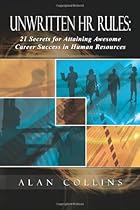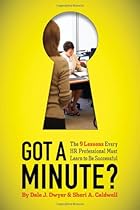Why is it that an unprofitable research stage technology company with no revenues can be worth millions more than a stable service or manufacturing business with several years of revenues and profits?
The answer to this fiscal unfairness can be found in the fundamentals of business valuations. It's important to note that any two licensed appraisers or prospective investors can read key valuation factors differently. But what is true to all business valuations is the attempt to put a dollar value on a company's future business potential.
Startup entrepreneurs and well-established business owners should have a sophisticated appreciation of how investors and ultimately business buyers will size up their company's potential. Sometimes these factors which can influence company valuations are referred to as "business fundamentals" or "investment fundamentals."
There are positive fundamentals just as there are negative fundamentals. Some fundamentals apply to the specific company's operations while other fundamentals apply to broader market conditions. Businesses with a long list of positive investment fundamentals tend to receive generous business valuations.
Here are six fundamentals that may influence the value of your business.
No. 1: Revenue predictability. How stable is your company's revenue stream? Businesses that serve customers through multi-year contracts or can prove they generate "recurring revenues" from service contracts and product upgrades are valued more highly than companies that have to fight for every customer year after year.
No. 2: Customer list. A company's customer list says a lot about its value. Ideally, businesses want to have an impressive list of customers who pay their bills on time. Further, higher value businesses are not dependent on any single customer for more than 10% of annual revenues.
No. 3: High gross margin business. High gross profit margin businesses have greater leeway to make business mistakes or cut costs during an economic downturn. Every percentage point gain not only helps improve business valuations, but keeps good businesses in business. It's why high gross profit margin software companies are valued higher than traditionally lower gross profit margin businesses such as grocery retailing.
No. 4: Intellectual property advantage. Businesses that own trademarks, patents, trade secrets, and copyrights can rely on federal laws to protect their innovations from competitor misuse. But not all patents and trademarks are valuable. More valuation credit is given to intellectual property that can generate extra revenues from licensing income for a company, or that truly blocks competitors from participating in a market.
No.5: Brand strength. A good brand is different than owning a trademark. Brands have reputations and if managed well can be a valuable business asset. Valuation experts measure brand value in several ways. One of the most influential factors is to estimate its licensing potential or if a company can reasonably apply the brand name to products or services in other markets.
No. 6: Low debt load. Does your business require a lot of debt to operate or expand? If so, valuation experts will give your company a painful "valuation haircut."
So how did you do? If you couldn't put a check mark next to any fundamental, then it's time to take meaningful steps to improve your business. Make it your best work!
Susan Schreter is a 20-year veteran of the venture finance community and small business policy advocate. Her educational work is dedicated to improving startup longevity and operating performance in rural, urban and suburban America.
| To Get Uninterrupted Daily Article(s) / Review(s) Updates; Kindly Subscribe To This BlogSpot:- http://ZiaullahKhan.Blogspot.com/ Via "RSS Feed" Or " Email Subscription" Or "Knowledge Center Yahoo Group". | ||
| Amazon Magazine Subscriptions | Amazon Books | Amazon Kindle Store |
| Amazon Everyday Low Prices, Sales, Deals, Bargains, Discounts, Best-Sellers, Gifts, Household Consumer Products | ||





